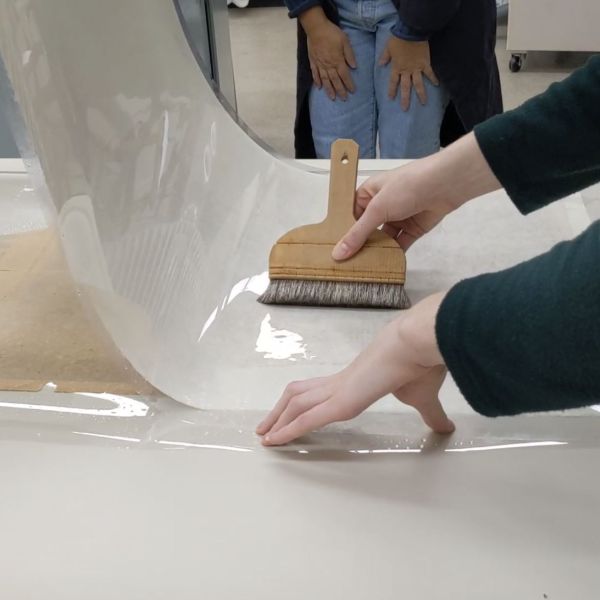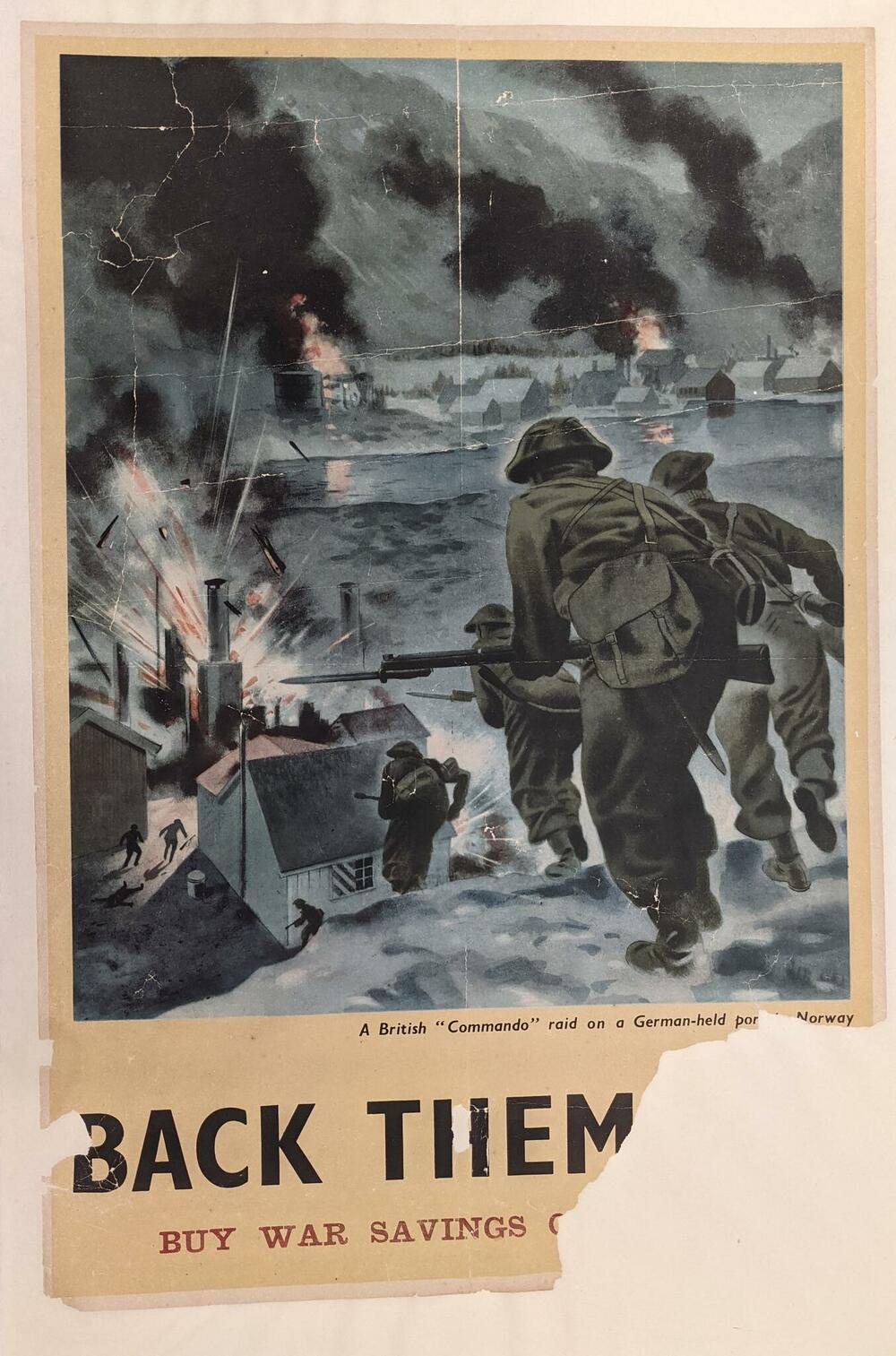In response to the Department of Art History & Art Conservation's call for stories of student achievements, Kristen Fader (M.A.C., 2023) describes her use of a Karibari board, to restore the condition of a WWII British propaganda poster:
"This week in the art conservation lab I was able to undertake a treatment utilizing a Karibari board, which is a drying board traditionally used in Japanese paper conservation. The object in question is a WWII British propaganda poster that was in pretty dire condition. The poster was really creased, had a multitude of tears, and even some small sections had detached from the main structure.

"Because of the condition of the poster, it was decided with my supervisor, Rosaleen Hill, to do a full backing lining using Japanese paper as the new supporting material and then place this on the Karibari board for drying. The board itself is quite interesting. It is a wooden lattice with ~10 layers of Japanese papers. Then, it is covered in fermented persimmon juice, which imparts a water resistance to the surface."

"A lining of Japanese paper is applied to the back of the poster with a mixture of wheat starch paste and methyl cellulose after the poster has been humidified. Then, this is carefully applied, poster side up, to the Karibari board to dry by friction mounting. To keep it in place, another Japanese paper is applied over top, with only the edged being pasted down to the board. To make sure that this top layer of paper, also known as the sacrifice layer, does not stick to the poster, a layer of holytek was used which will ensure this does not happen. In a few days, it will be fully dried and flattened and ready for the next step in its treatment: fills!"



